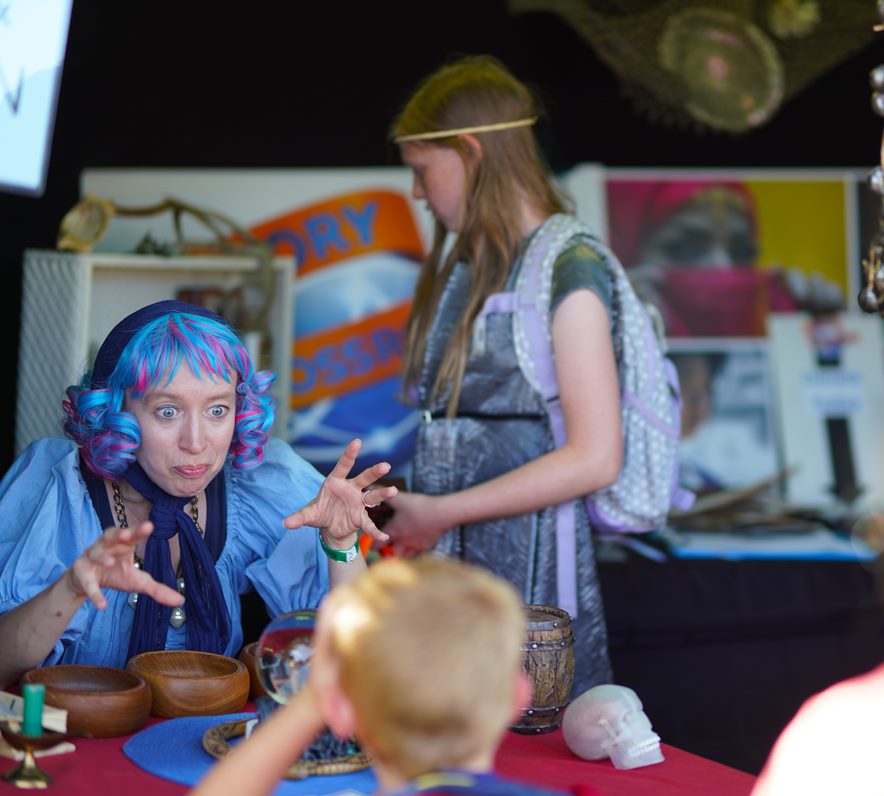By Renée Leta
For nearly 60 years, Utah has been investing in the cultural sector through its support of arts and museum funding. Utah’s Division of Arts & Museums has the proud history of being the oldest arts agency in the nation, a signpost of how the state prioritizes our rich cultural heritage. Anchor nonprofits throughout the state include dance studios, dance companies, theater companies, orchestras, choral groups, galleries, and museums.
Laurel Cannon Alder, grants manager with the Utah Division of Arts & Museums, has spent more than 15 years with her pulse on the state’s arts groups and museums. She offers insights into the state’s grant process, as well as the creative, scrappy, and remarkable nonprofits that make up Utah’s cultural community.
What are the two largest state arts grant programs?
The largest state grant program is the General Operating Support Grants program for museums, art organizations, and local arts agencies. Utah prioritizes spending more than 80% of the grant budget on general operating support for these institutions. Providing general operating grants is considered a “best practice” among grant professionals.
Utah is among the leaders in the nation in providing this kind of support. The grant committee makes decisions based on scores on written applications, budget size, and consideration of whether organizations are in full compliance with state and federal requirements. In FY 2023, the division funded 33 new applicants, in addition to more than 200 other organizations through General Operating Support funds.
When awarding general operating support grants, the division offers a rural benefit to organizations that have a high economic contribution score to their community, according to a tool developed by the University of Utah’s Kem C. Gardner Policy Institute. Using this tool, organizations from rural Utah receive extra consideration.
The division also provides Project Support Grants for partners, performing arts presenters, museums, folk arts, seniors, and artist career advancement. The diversity of projects funded through these grants around Utah are prioritized to benefit local communities. In 2023, the division funded festivals, exhibitions, workshops, and theater performances in nearly every county in Utah.
Project support grants are matched at least 1:1, and a grantee can request up to $10,000. The division posts a rubric onto their website about what we are looking for, and grantees receive their grant awards based on the score received on their written grant.
The division also manages other grant opportunities: for performances in communities that include community outreach and a public performance; folks arts grants for the purpose of protecting and preserving the heritage of local communities; and grants to individual artists.
Additional grants include a creative aging program for those 55 and older, and funding to provide technical and professional support to staff at our state’s smallest museums, as those often have the most vulnerable collections.
For these programs, why does it matter that these grants are “peer-reviewed”?
Utah Arts & Museums publishes both the guidelines and the review rubric for the grants to help applicants do the best job they can in the application process. The division believes that publishing the “rules” is important for both the applicants and the selection committee in making the process fair and transparent.
Each year, the process includes more than 100 panelists of professionals in arts and museums who are engaged in the process. Drawing on the expertise of members of our community from arts, education, administrative sectors, as well as community leaders, offers an effective way to engage the public and draw on the strength of the local knowledge base. They also strive to include a mix of gender, geographic representation, length of service, genre, and organization size in our panelist selection. Division staff manage the process, but aren’t involved in the grant decisions.
What do applicants tell you about the importance of the state arts grants for their nonprofits?
Nonprofit organizations in this country exist with the support of earned revenue, private donations, and government support. Government funding is vitally important to nonprofits. General operating funding from the division can only meet a small portion of an organization’s budget, so organizations must piece together many different funding sources.
We continue to see how arts remain important to individuals throughout our communities. However, in our post-pandemic world, we are beginning to see only some of our organization’s audiences return to pre-pandemic levels. That, in addition to weathering the impacts of inflation, have created difficulties for many of our arts institutions.
The team at the Utah Division of Arts & Museums is involved with many national institutions and seeks local research and information from nonprofits to better understand emerging issues.
We are in dialogue with groups located throughout Utah communities about their organization’s capacity, mission, and programs.




Friends of the Moab Folk Festival, for example, offers access to arts and music experiences to residents and visitors in a remote area of the state. The annual festival contributes more than a half a million dollars in economic benefit to the town in hotel rooms rented, meals eaten, and activities purchased. The event generates earned income and also enables the festival to provide free programs for students, seniors, and other residents.
We are so proud of what our cultural organizations offer to Utahns and, in many instances, the national arts community.
Visit this page for more information about the state’s arts grants programs.

